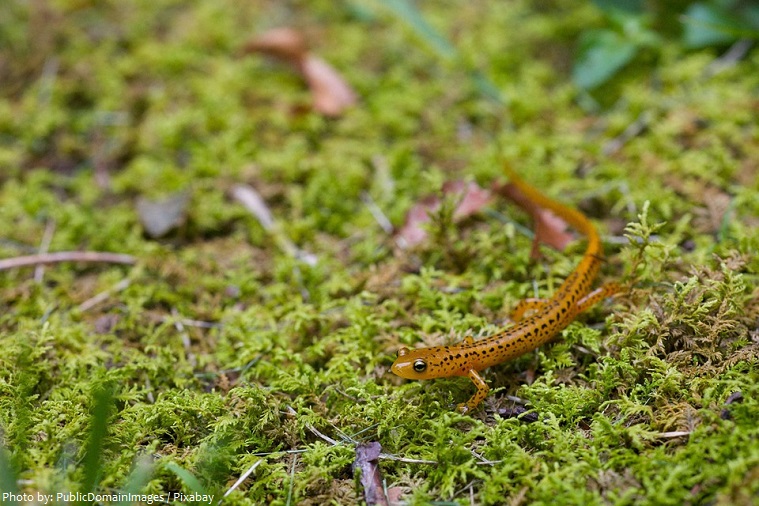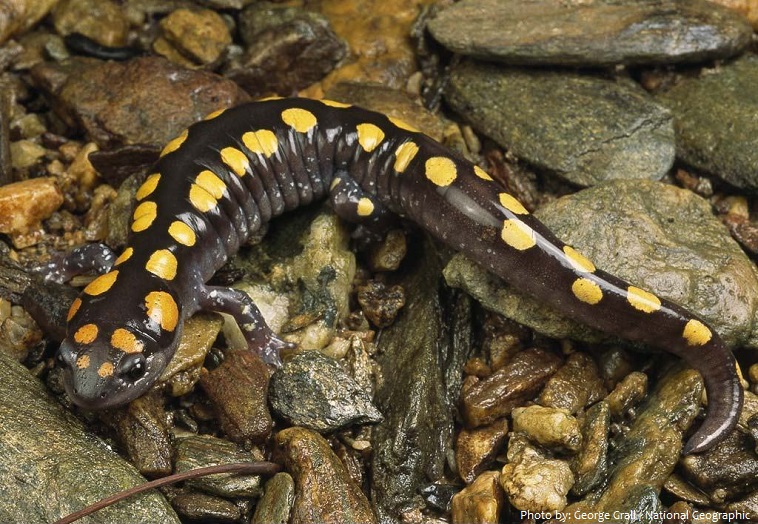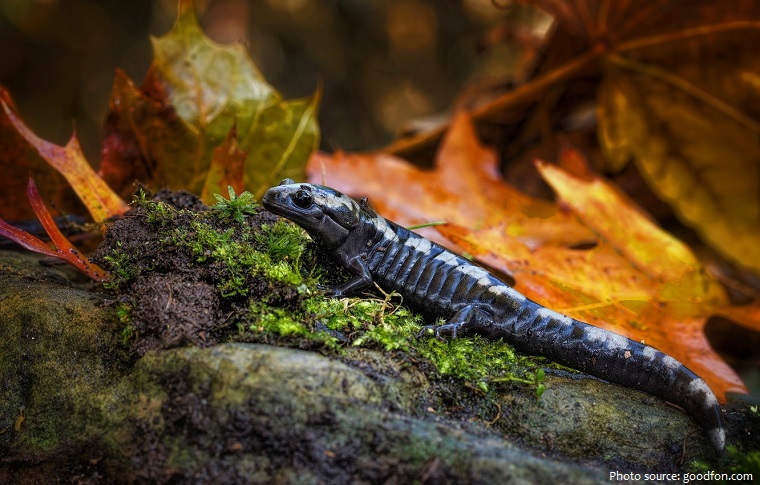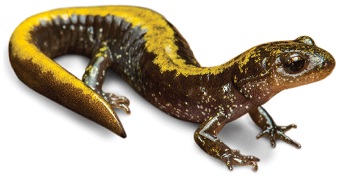Salamanders are a group of amphibians typically characterized by a lizard-like appearance.
There are about 500 species of salamander.
Salamanders are found in North America, South America, Northern Africa, Asia and Europe.
Their diversity is most abundant in the Northern Hemisphere.
Salamanders live in rivers, swamps, forests and caves. Some spend their entire lives in water, while others migrate between water and soil for seasonal events like spawning.
Most salamander species have lifespan about 10 to 20 years; but some species live up to 55 years.
Salamanders range in size from the minute salamanders, with a total length of 2.7 cm (1.1 in), including the tail, to the Chinese giant salamander which reaches 1.8 m (5.9 ft) and weighs up to 65 kg (143 lb). Most, however, are between 10 and 20 cm (3.9 and 7.9 in) in length.
Salamanders are generally short-bodied, four-legged, moist-skinned animals.
Some salamander species have lungs, some have gills, and some have neither — they breathe through their skin.
A salamander’s hind legs grow more slowly than its front legs. (Frogs and toads are just the opposite: their hind legs grow more quickly than their front legs.) All four legs on a salamander are so short that its belly drags on the ground.
They are capable of regenerating lost limbs, as well as other damaged parts of their bodies. They routinely regenerate complex tissues.
Salamanders can drop their tail to escape predators. The tail will drop off and wriggle around for a little while, and the salamanders will either run away or stay still enough to not be noticed while the predator is distracted.
The skin may be drab or brightly colored, exhibiting various patterns of stripes, bars, spots, blotches, or dots. Male newts become dramatically colored during the breeding season. Cave species dwelling in darkness lack pigmentation and have a translucent pink or pearlescent appearance.
The skin of some species contains the powerful poison tetrodotoxin; these salamanders tend to have bright warning coloration.
Active at night, they seek out cool and dark places to hide during the day.
All salamanders are carnivores, but they are seldom in a hurry to catch their meals. Because they move more slowly than other meat eaters, salamanders tend to eat slow-moving, soft-bodied creatures such as earthworms, slugs, and snails. Larger species may eat fish, crayfish, and small mammals such as mice and shrews. They might approach their target slowly, and then make a quick grab with their sharp teeth. Or they might hide and wait for a tasty meal to pass close enough to snatch. Several species can flick out their tongues to catch food as it goes by.
Like other amphibians, they absorb water through their skins.
Salamanders usually move very slowly, although they can run quickly to get away from danger. Andean salamander is the fastest salamander species – it can reach speeds of about 24 km/h (15 mph).
Salamanders can’t hear sounds, so they don’t make any either. However, some species can hug the ground to pick up sound vibrations with their body.
In regions where the temperature goes below freezing, they often hibernate.
Amphibians are more diverse in the ways they reproduce than any other vertebrate group. Salamanders are born one of four ways, depending on species. They are born either as larvae in water, as larvae from eggs in water, as miniature adults on land or from eggs on land.
Salamanders in the larval stage of their development are called efts.
Around half of all the world’s salamander species are listed as Threatened by the International Union for Conservation of Nature (IUCN).
Legends have developed around the salamander over the centuries, many related to fire. This connection likely originates from the tendency of many salamanders to dwell inside rotting logs. When placed into a fire, the salamander would attempt to escape from the log, lending to the belief that salamanders were created from flames.
Leonardo da Vinci wrote the following on the salamander: “This has no digestive organs, and gets no food but from the fire, in which it constantly renews its scaly skin. The salamander, which renews its scaly skin in the fire, for virtue.”
The Japanese giant salamander has been the subject of legend and artwork in Japan, in the ukiyo-e work by Utagawa Kuniyoshi. The well-known Japanese mythological creature known as the kappa may be inspired by this salamander.
A 1995 article in the Slovenian weekly magazine Mladina publicized Salamander brandy, a liquor supposedly indigenous to Slovenia. It was said to has hallucinogenic effect and is made by putting several live salamanders in a barrel of fermenting fruit. Stimulated by the alcohol, they secrete toxic mucus in defense and eventually die.






